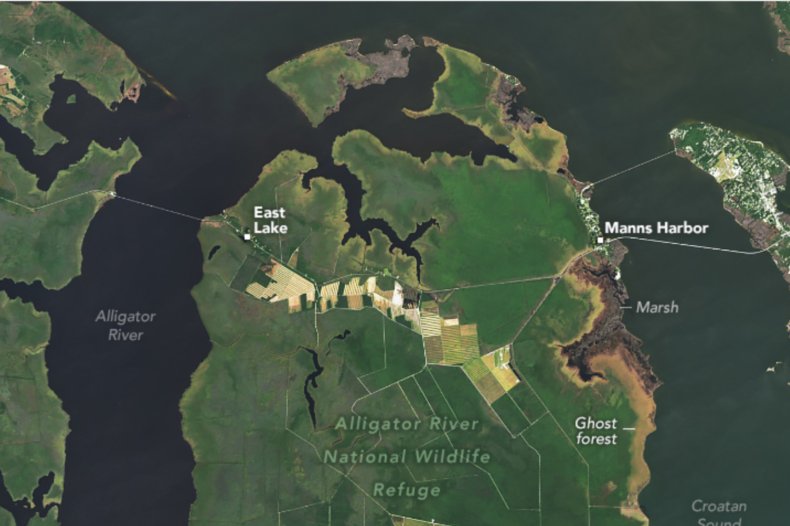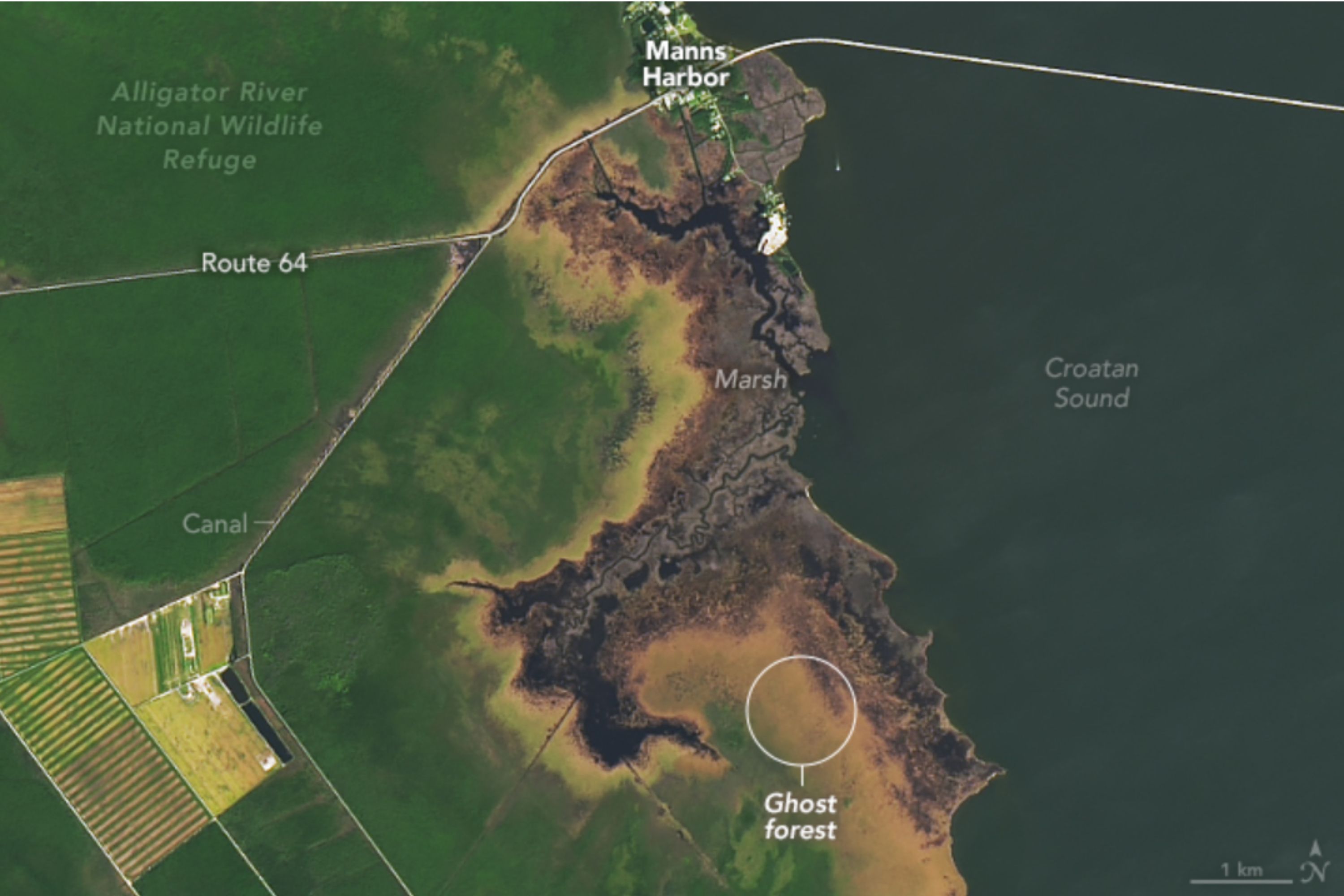Stunning satellite images reveal the alarming decline of North Carolina’s “ghost forests.” Over the years, especially from 2005 to 2024, these unique bald cypress woodlands have shifted from a vibrant green to a disheartening brown.
Ghost forests arise in coastal areas where trees succumb to rising sea levels, leading to saltwater intrusion and significant erosion. The saline water contaminates the freshwater resources these trees depend on, disrupting the soil’s chemistry and causing tree deterioration, as explained by the National Oceanic and Atmospheric Administration (NOAA).
As the trees die, they remain standing for a while, giving the landscape an eerie, zombie-like appearance until they eventually fall and decompose.
Drag slider
compare photos



According to Xi Yang, an environmental scientist at the University of Virginia, the closer a forest is to sea level, the higher the risk of tree mortality, making ghost forests more prevalent. This issue isn’t just limited to North Carolina; ghost forests are becoming common along the East Coast, impacting various tree species from cypress to pines. A study from 2021 highlighted that 11% of forest land within North Carolina’s largest coastal wildlife refuge transitioned to ghost forest between 1985 and 2019.
This phenomenon was notably exacerbated between 2011 and 2012, following Hurricane Irene and a significant drought, which saw approximately 4,500 hectares convert into ghost forest during that period, as reported in a 2021 study published in Ecological Applications.

The surge in ghost forests is primarily linked to rising global sea levels due to climate change and melting ice caps. Specifically, North Carolina is experiencing sea level rise at a rate three times the global average, reaching between 3 mm to 4 mm annually, compounded by land subsidence.
Coastal forests like these act as essential buffers, protecting inland areas from erosion and storm damage. With their disappearance, coastal communities are left more vulnerable. Moreover, this alarming trend threatens some of the oldest trees in the eastern U.S.
As Duke University ecologist Emily Bernhardt pointed out, climate change compounding human development leads to stark consequences, “Marshes may shift with rising sea levels, but the cypress forests have no place to relocate, resulting in widespread mortality events.”
References
Ury, E. A., Yang, X., Wright, J. P., & Bernhardt, E. S. (2021). Rapid deforestation of a coastal landscape driven by sea‐level rise and extreme events. Ecological Applications, 31(5). https://doi.org/10.1002/eap.2339
